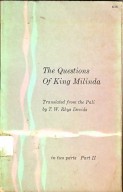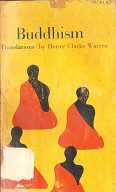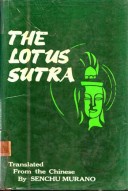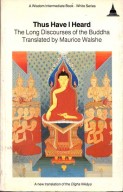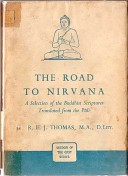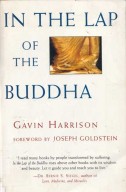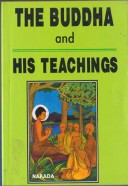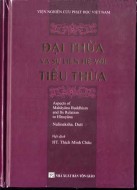Tìm Sách
Sách tiếng Anh-English >> Thirty Years of Buddhist Studies
Thông tin tra cứu
- Tên sách : Thirty Years of Buddhist Studies
- Tác giả : Edward Conze
- Dịch giả :
- Ngôn ngữ : Anh
- Số trang : 243
- Nhà xuất bản : Bruno Cassirer Ltd. Oxford
- Năm xuất bản : 1967
- Phân loại : Sách tiếng Anh-English
- MCB : 1210000003856
- OPAC :
- Tóm tắt :
Selected Essays by Edward Conze
FOREWORD
When teaching recently for a year in North America,-it was suggested to me that a re-publication of some of my articles, which have appeared over a period of thirty years in various periodicals, and are now almost unobtainable, might be of assistance to Buddhist scholarship. I therefore submit herewith a first selection of these articles to my readers. If there is sufficient demand, in other words if my patient publisher loses no money on this venture, we plan to bring out a second volume, to be called Further Buddhist Studies, later on.
The collection contains two Surveys: The first (p. i) shows the revolutionary changes which have taken place in the study of Buddhism between 1940 and i960 with regard to the early period, the Mahayana, the Tantras and Zen; the second (p. 48) still remains the only general survey of Mahayana Buddhism with any claims to scholarly exactitude. Two articles deal with Buddhism as a Philosophy (pp. 21O, 229), and one with Buddhism as a religion (p. 33). I have included three translations: Buddhaghosa on the Recollection of Death, the Lotus of the Good Law and a Perfection of Wisdom. The first concerns a standard meditation, followed by a number of my own comments which cannot, I think, be described as an unqualified success, but which may have some merit as a first attempt to do something which will have to be done better and more extensively by others in due course. The second is taken from the Saddharmapundarĩka, one of the great classics of Mahayana Buddhism, and greatly revered in the Far East. By consulting the Tibetan translation of the verses I have been able to improve substantially the translation I gave in ” Buddhist Texts” in 1954 (nos. 123 and 134). I undertook this translation because at that time the Oxford University Press considered issuing a modernized version of their Sacred Books of the East and because I wanted to show what radical changes, as compared with Kern’s translation of 1884, would have to be made eighty years later. However, the Oxford University Press found that the scheme was impracticable, and I therefore reprint here only the fifth chapter of my translation which, in the absence of further encouragement, is all that I am ever likely to do. Professor Th. de Bary of Columbia University is, I am glad to hear, arranging for a translation of the Lotus of the Good Law from the Chinese. Thirdly I give the first part of The Perfection of Wisdom in 700 Lines. The page-numbers refer to J. Masuda’s edition of the Sanskrit text (see my The Prajnaparamità Literature, i960, pp. 62-4) which is, alas, confined to the first part of the Sutra. In its second part the text is so corrupt that the meaning cannot always be ascertained with any degree of certainty, and an English translation must await a better edition of the Sanskrit original.
That brings us to the Prajnaparamita which by some obscure karmic dispensation has during this life been my dominant interest. At the present stage of our knowledge of the Mahayana chronological studies of selected literary documents are an especially urgent requirement, and I have attempted to give them for the Prajnaparamita literature in general (pp. 123), and for the version in eight thousand Lines in particular (pp. 168). With regard to the celebrated Heart Sutra, I have not only attempted to submit a better text, but also to reveal its meaning by placing it into its historical context. Two other contributions are rather slight. One (p. 185) attempts to establish some connection between modern psychology and the thought of the Prajnaparamita; the other (p. 207) to indicate some of the similarities between the Indian concept of Prajnaparamita and the nearly contemporary Mediterranean concepts of Sophia and Chochma. The ideas of the latter paper were further developed and presented in a more elaborate lecture on “Gnostic Trends in Buddhist Thought”, which I gave in i960 at the 25th International Orientalist Congress in Moscow, but the opposition to my thesis, particularly from the Indian delegates, was so vehement that it not only propelled me to the front page of Pravda but also made me have second thoughts. In the face of so much hostility I have accumulated further data and the July issue of Numen 1967 contains my final views on the striking similarities between Buddhism and Gnosis. Finally, the two articles on “The iconography of the Prajnaparamita” are a systemic attempt to survey all the manifold manifestations of this figure. There are few other studies of this kind, and the only other examples which come readily to mind are Mile, de Mallmann’s studies of Avalokitesvara (1948) and Manjusri (1964).
Most of the material has been reprinted verbatim as it stood, though there have been some minor adjustments. In the two philosophical articles (pp. 210-242) the loving editorial cafe of Prof. Charles Moore of Hawaii, editor of Philosophy East and West, had so much changed the tone of what I had written that one might have thought it to have emanated from Princeton, Wisconsin or Nebraska. The reprint has nearly everywhere restored the idiosyncrasies of my original text. The article on the Prajnaparamita-hrdayasũtra differs from the original publication in the JR AS in two ways: I. The “Bibliography” at the end (JRAS, pp. 48-51) has been lopped off, because it has meanwhile appeared in a much fuller, form in The Prajnaparamita Literature, i960, pp. 71-75.2. The Sanskrit text of the Sutra has been re-edited on the basis of now twenty-nine documentary sources. And in the “Iconography” I have re-cast the list of “Images” so as to take account of post-1950 research on the subject.
It now remains for me to thank those persons and Institutions who have so generously given me their permission to reprint the articles which have appeared in their journals.
Far Eastern and Russian Institute,
University of Washington,
Seattle, Washington, 98105
TABLE OF CONTENTS
Foreword
Recent Progress in Buddhist Studies
Buddhist Saviours
Mahayana Buddhism
The Meditation on Death
The Lotus of the Good Law, ch. 5: On Plants
The Development of Prajnaparamita Thought
The Prajnãpãramitã-hrdaya Sutra
The Composition of the Astasãhasrikã Prajnãpãramitã
Hate, Love and Perfect Wisdom
The Perfection of Wisdom in Seven Hundred Lines
Prajna and Sophia
Buddhist Philosophy and its European Parallels
Spurious Parallels to Buddhist Philosophy
The Iconography of the Prajnaparamita
Index
 Facebook
Facebook
 Google
Google
 Google+
Google+

